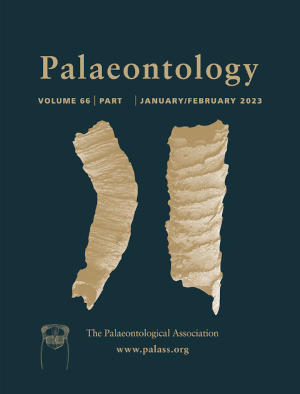Article: Early Cenozoic increases in mammal diversity cannot be explained solely by expansion into larger body sizes
Publication: Palaeontology
Volume:
66
Part:
3
Publication Date:
2023
Article number:
e12653
Author(s):
Gemma Louise Benevento, Roger B. J. Benson, Roger A. Close, and Richard J. Butler
Abstract
Abstract A prominent hypothesis in the diversification of placental mammals after the Cretaceous–Palaeogene (K/Pg) boundary suggests that the extinction of non-avian dinosaurs resulted in the ecological release of mammals, which were previously constrained to small body sizes and limited species richness. This ‘dinosaur incumbency hypothesis’ may therefore explain increases in mammalian diversity via expansion into larger body size niches, that were previously occupied by dinosaurs, but does not directly predict increases in other body size classes. To evaluate this, we estimate sampling-standardized diversity patterns of terrestrial North American fossil mammals within body size classes, during the Cretaceous and Palaeogene. We find strong evidence for post-extinction diversity increases in all size classes. Increases in the diversity of small-bodied species (less than 100 g, the common body size class of Cretaceous mammals, and much smaller than the smallest non-avialan dinosaurs (c. 400 g)) were similar to those of larger species. We propose that small-bodied mammals had access to greater energetic resources or were able to partition resources more finely after the K/Pg mass extinction. This is likely to be the result of a combination of widespread niche clearing due to the K/Pg mass extinctions, alongside a suite of biotic and abiotic changes that occurred during the Late Cretaceous and across the K/Pg boundary, such as shifting floral composition, and novel key innovations among eutherian mammals.
